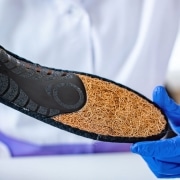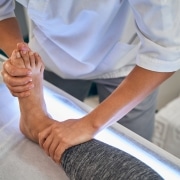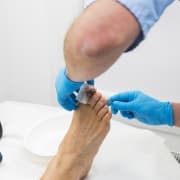What Are Orthotics?
When your podiatrist in Pflugerville or Austin, TX, does your exam, an abnormal movement of the ankle or foot may be discovered. Often, this abnormal movement is the root cause of pain or discomfort in the body. Interestingly, some people try to alleviate discomfort on their own, thinking that they need a softer insole in their shoes or simply a new pair of shoes. However, trying to solve this condition with over-the-counter insoles from a drugstore is not going to help the problem and may even make matters worse.
Off the Shelf, Inserts Are Not Orthotics
You may have thought that you needed more cushion if you are experiencing foot pain. While a softer sole or more cushion may feel great, it does not address the root cause of foot pain. Many people make this mistake when they purchase orthotics. Simply bending your shoe insert will reveal its purpose of it. If you can easily bend or roll your shoe insert, this type of insert provides cushioning, not support.
Custom Orthotics in Austin, TX
Custom orthotics in Pflugerville or Austin, TX, are completely different. Custom means that a podiatrist may take an impression or scan of your foot to make the orthotic. Your ankle and foot’s alignment and function will be properly adjusted when you get a custom orthotic from your podiatrist. The abnormal movement of the foot can be improved by these types of orthotics. In addition, you may feel less pain and have fewer other alignment issues. Custom orthotics can also make cardio and other exercise activities safer, more effective, and less painful.
If your feet or ankles always hurt, a drugstore trip won’t help in the long run. Before you spend money on a shoe insert, see a podiatrist get a proper diagnosis. Contact us today for an appointment.








